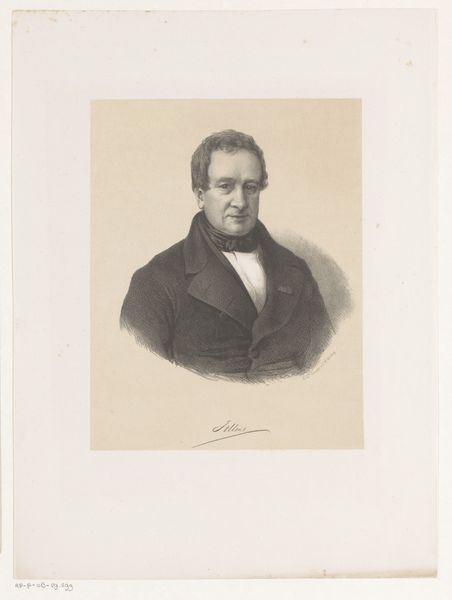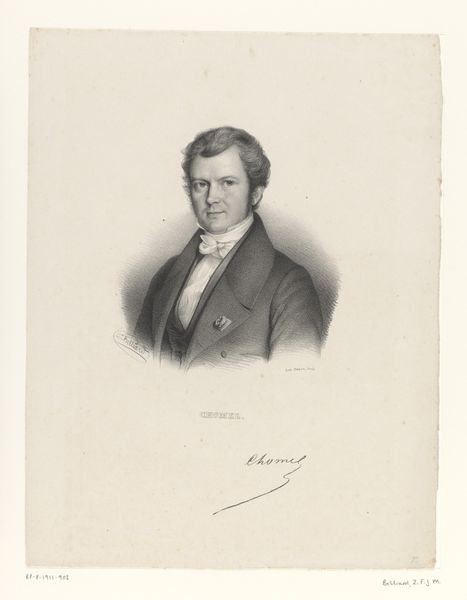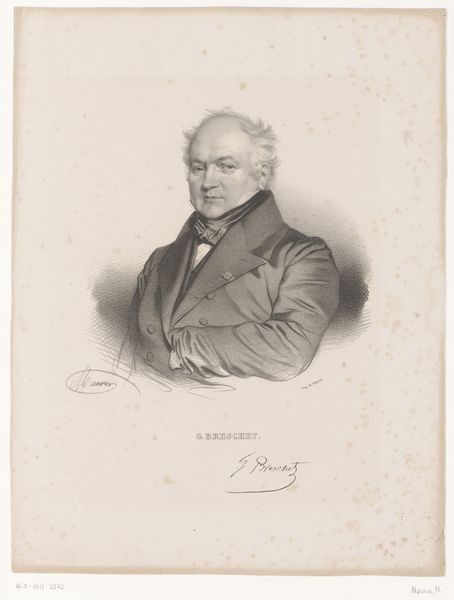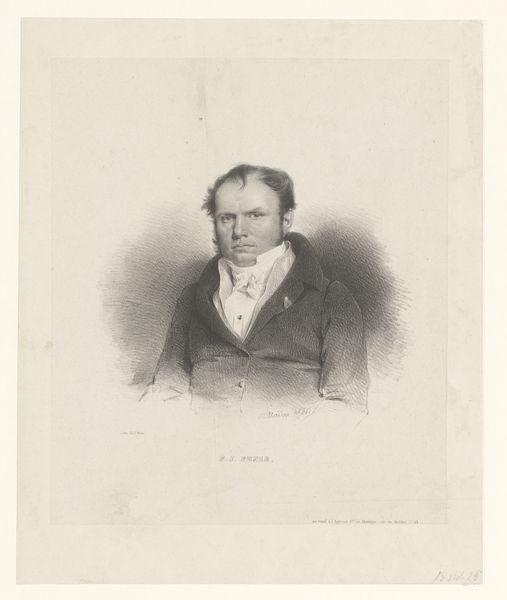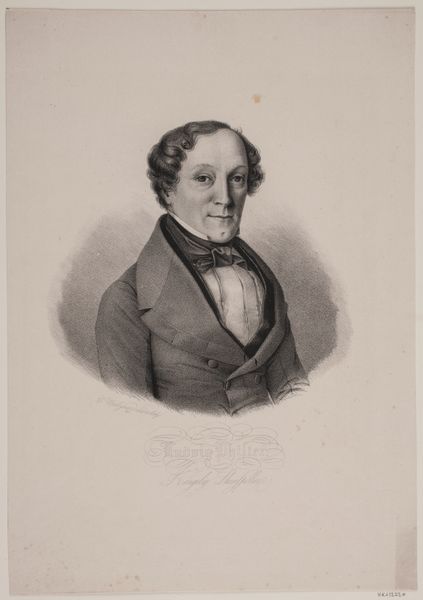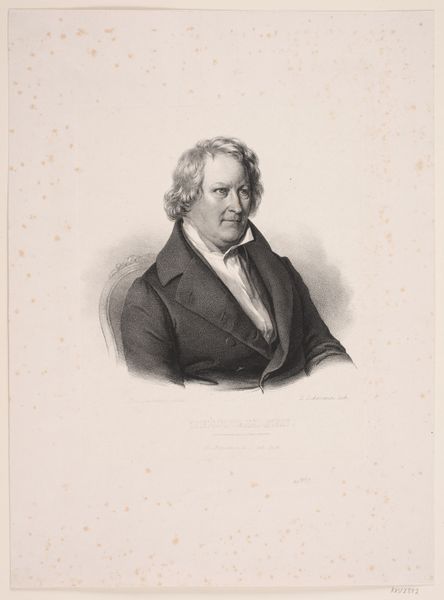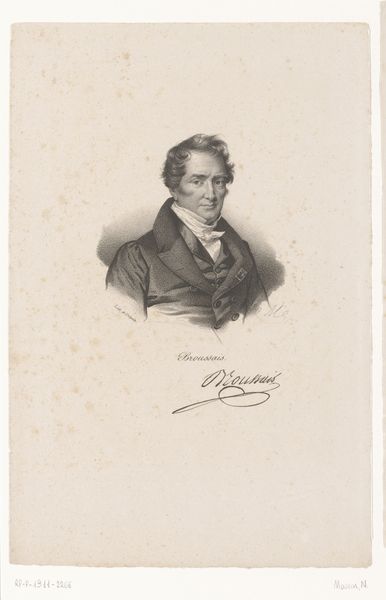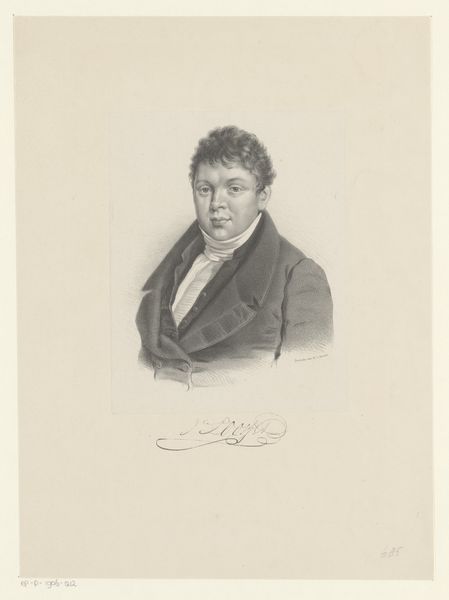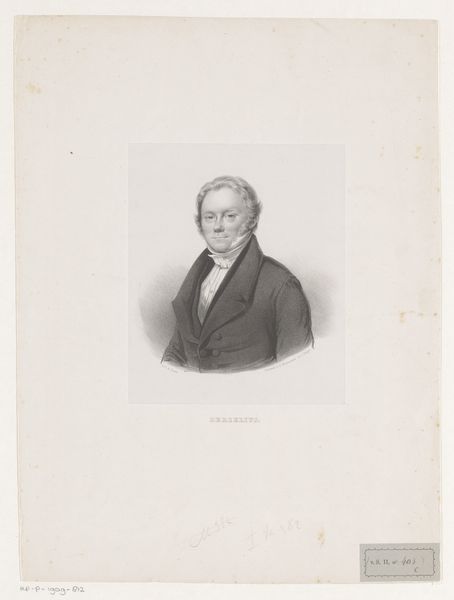
#
pencil drawn
#
photo of handprinted image
#
light pencil work
#
photo restoration
#
pencil sketch
#
old engraving style
#
personal sketchbook
#
pencil drawing
#
pencil work
#
watercolour illustration
Dimensions: height 360 mm, width 272 mm
Copyright: Rijks Museum: Open Domain
Here is Nicolas Maurin's lithographic portrait of Auguste Cullerier. It comes from a time in the 19th century when lithography enabled a broader public access to portraiture. In this portrait, Cullerier appears as a man of substance, embodying the values and aesthetics of the bourgeoisie. Yet, it's important to remember the historical context: this was a period of stark class divisions. The French Revolution might have happened, but social mobility remained limited. The portrait provides us not just with an image of Cullerier, but also with insights into the power dynamics of the time. Portraits like these played a role in constructing and reinforcing social hierarchies, dictating who was seen, remembered, and celebrated. It makes you wonder about those who remained unseen. How do such images shape our understanding of history and belonging?
Comments
No comments
Be the first to comment and join the conversation on the ultimate creative platform.

